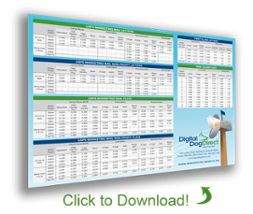
It’s easy to assume that print catalogs would be destined for the same fate as the sabre-tooth tiger, given the growth of email, social media, search marketing, video, and other digital platforms. After all, a marketing format that’s 175 years old should be obsolete by now, right?
If that’s the case, why did Wayfair launch its first print catalog in 2016? Why did Amazon follow suit two years later with its first-ever holiday gift catalog in 2018?
According to Harvard Business Review, response rates from catalogs increased 170 percent from 2004 to 2018. In a field study with a luxury retail brand, HBR found that a combination of catalog and email produced a 49 percent sales increase and a 125 percent increase in sales inquiries, compared to a 28 percent sales increase and 77 percent more inquiries for email alone.
What is it about modern print catalogs that makes them so effective?
The Print Catalog Experience
No longer page after page of product images and descriptions, today’s print catalogs look more like high-end magazines with stunning photography, creative design, and clever writing that evoke an emotional response from the recipient.
Catalogs go beyond the product to tell stories that preview the result of using the product, which is ultimately what your audience is buying. By making the product more vivid, catalogs enable your audience to visualize the experience of using the product and how they’ll benefit.
Beyond the visual appeal, print catalogs can integrate QR codes, augmented reality, and other interactive features that bridge physical and digital experiences. The recipient can make a purchase instantly or find additional content that can influence their purchase decision.
Print catalogs provide a more active, tactile experience, which leads to better recall. You can thumb through the catalog yourself, mark pages and content that interest you, share the catalog with other members of your household, or set it aside for future viewing. This explains why print catalogs have such a long shelf life.
In fact, the average time spent looking at a print catalog is 15.5 minutes, according to the USPS, and people hold onto catalogs for an average of 20.3 weeks. 72 percent of people surveyed said catalogs made them more interested in the products featured, while 84 percent purchased an item after seeing it in a catalog.
Data-Driven Distribution and Customization
The days of mass printing and distribution of catalogs are over.
Even a monster like Amazon, which has more than enough resources to finance a catalog for the masses, would rather leverage tremendous amounts of user data to optimize costs. The right data can help you determine not only who should receive the catalog, but also how to design and potentially customize the catalog.
Of course, you don’t need the depth of data that Amazon has to customize and precisely target a print catalog. To maximize cost efficiency, you can use your own database and purchase a reliable list to develop a catalog and distribution plan based on the location, demographics, and preferences of your audience.
Print catalogs are alive and well, even among some of the world’s largest online-only brands. Let’s discuss how you can use catalogs to increase sales and build a stronger connection with your audience. Contact us to unleash the power of Digital Dog Direct.



Comments